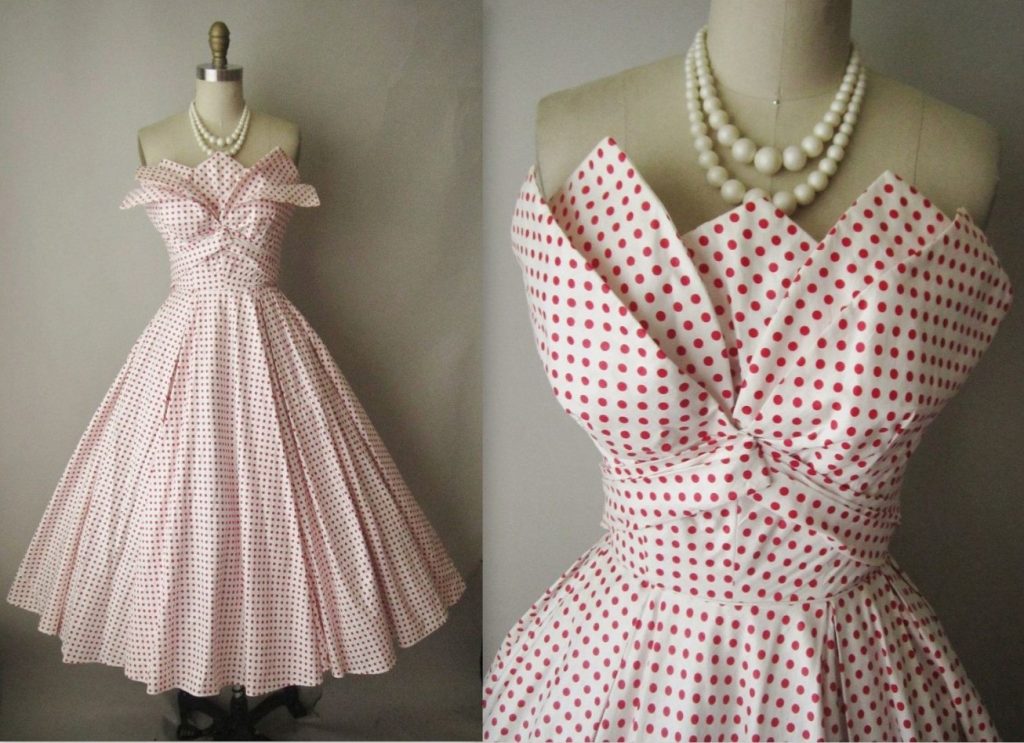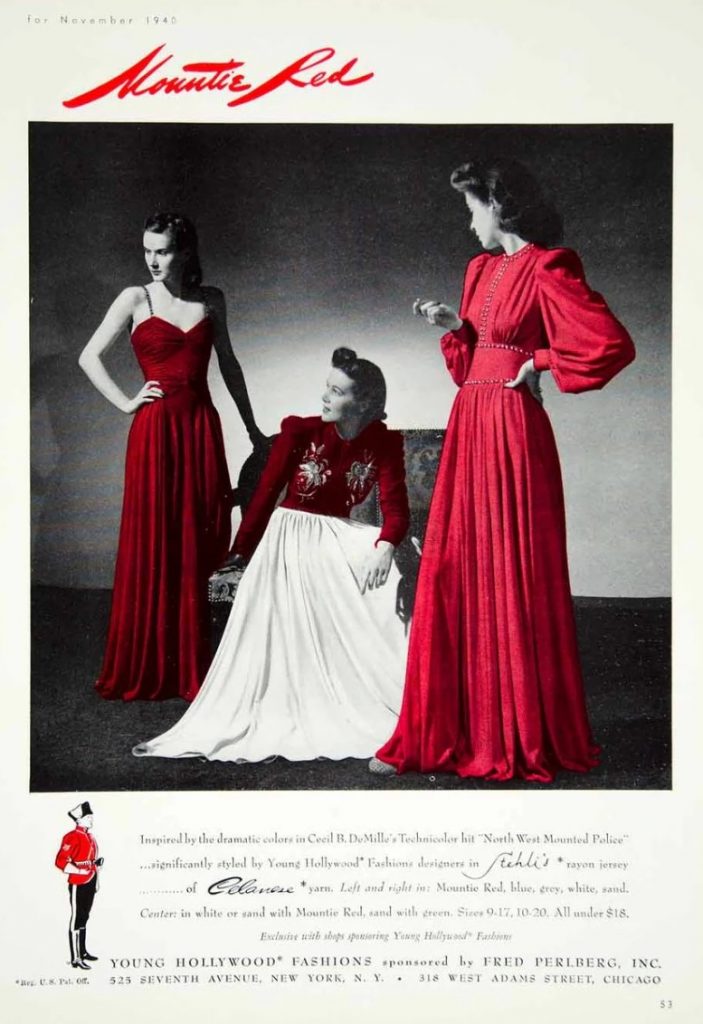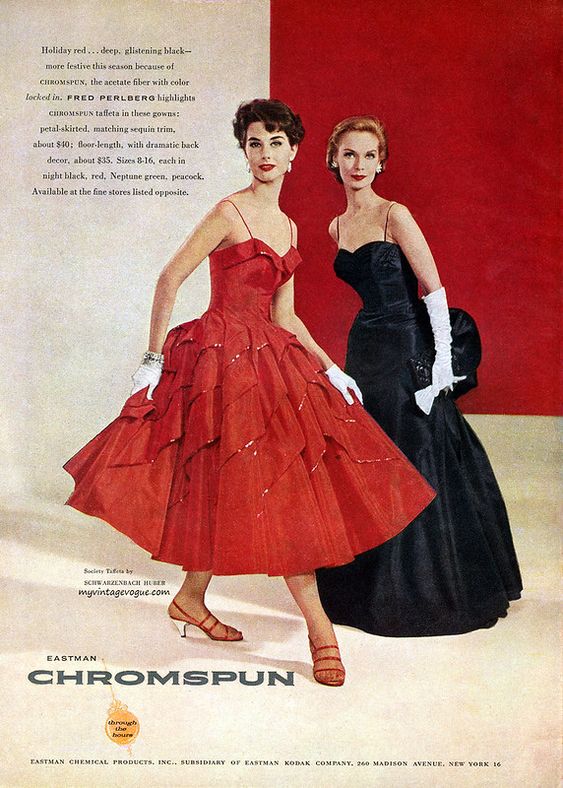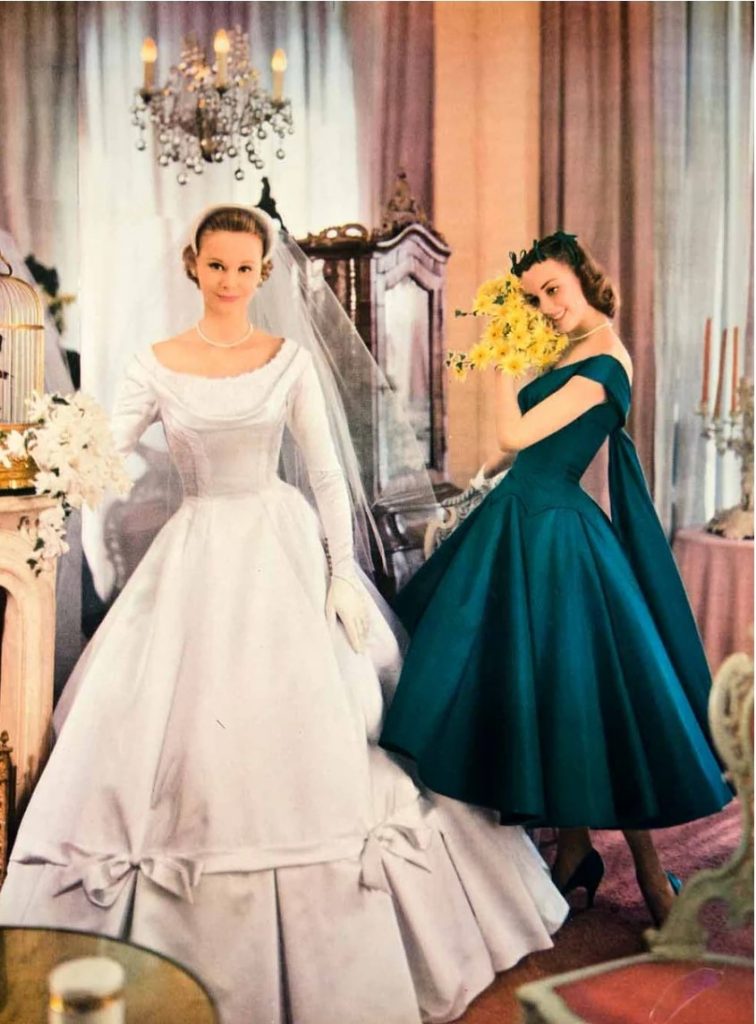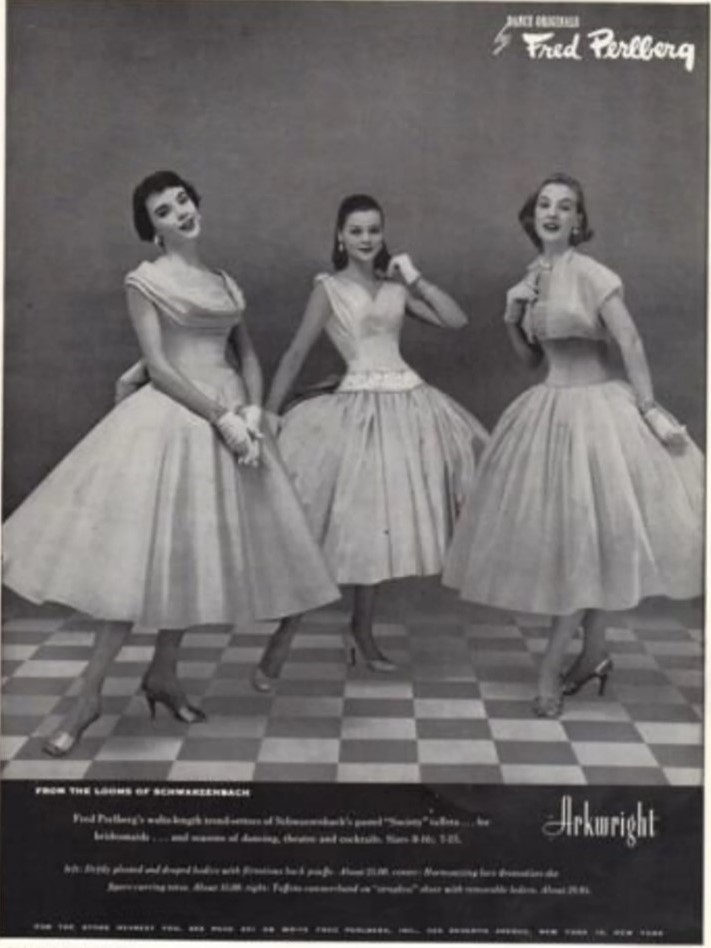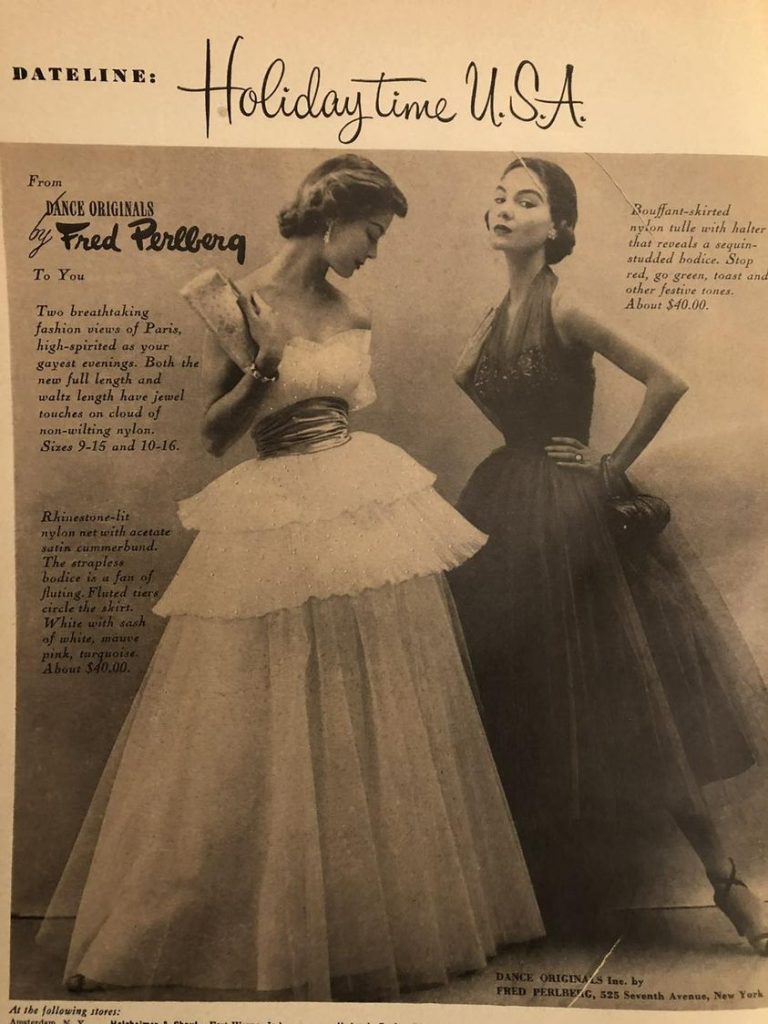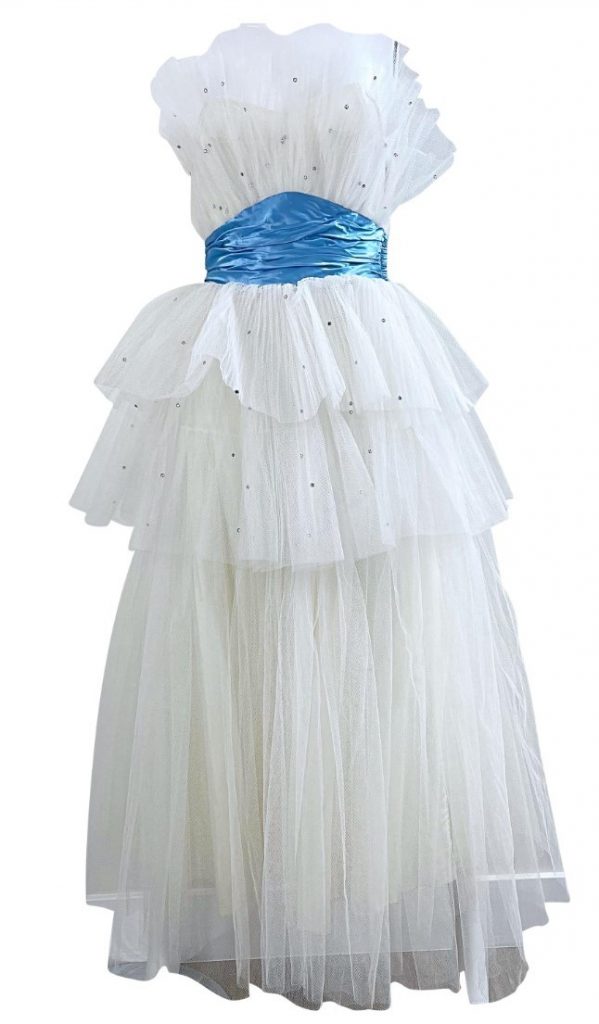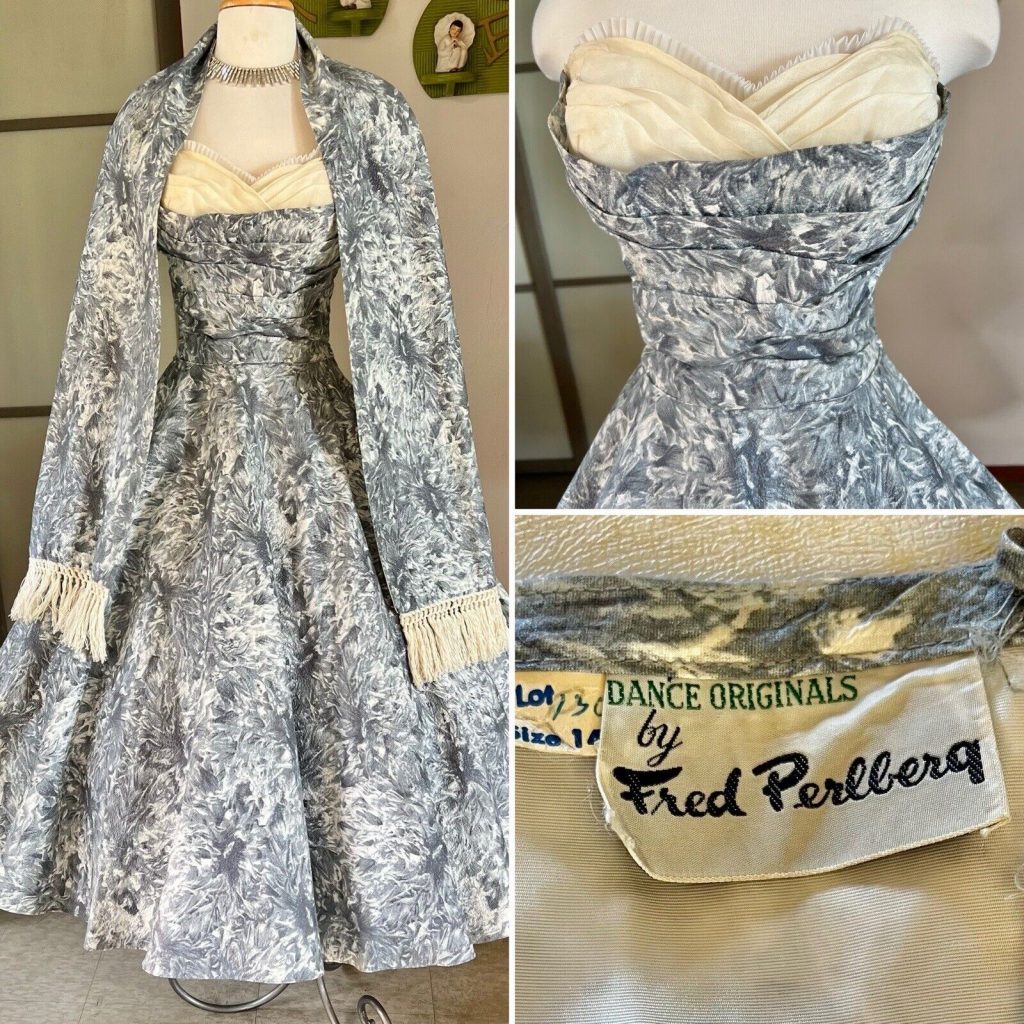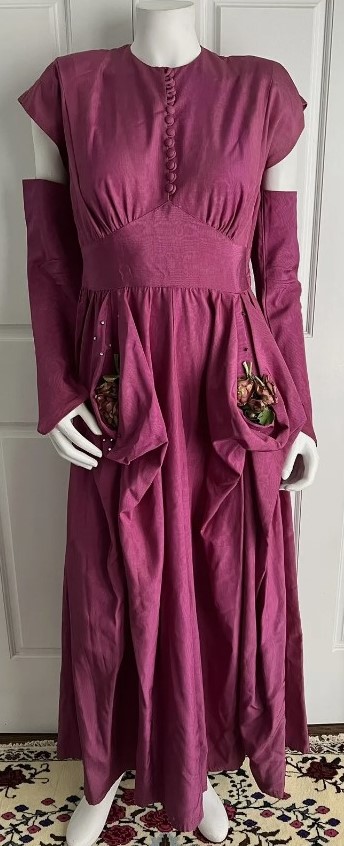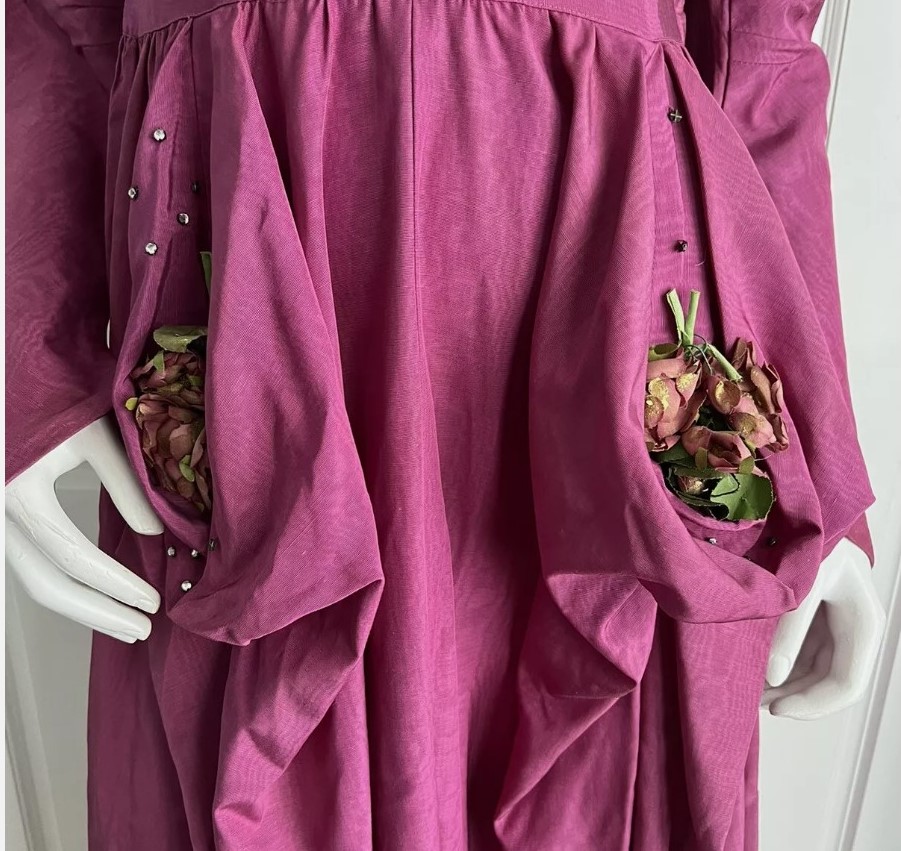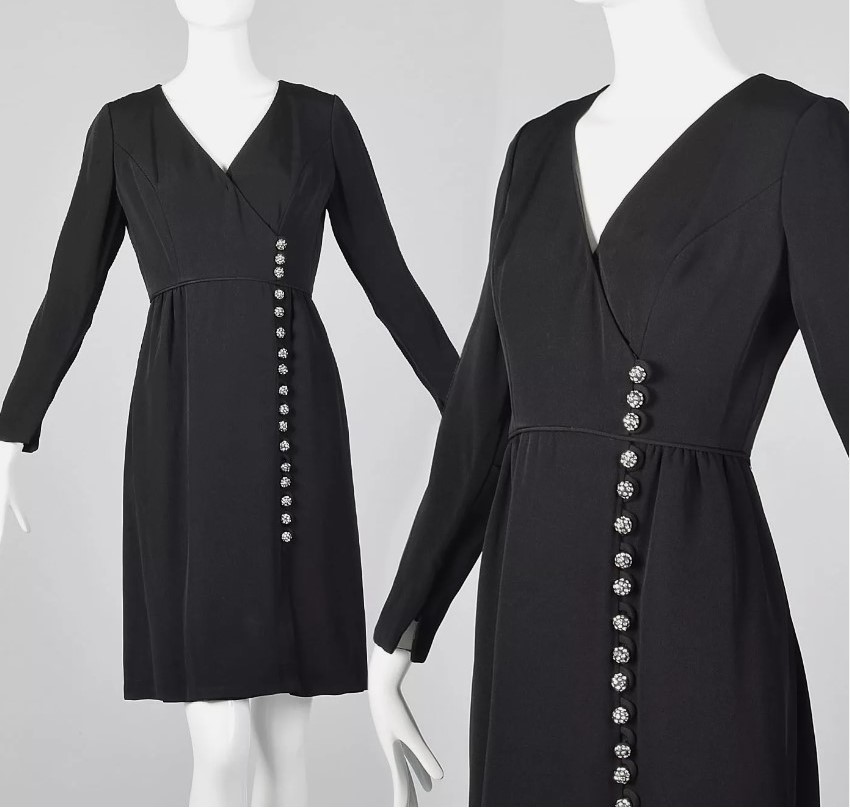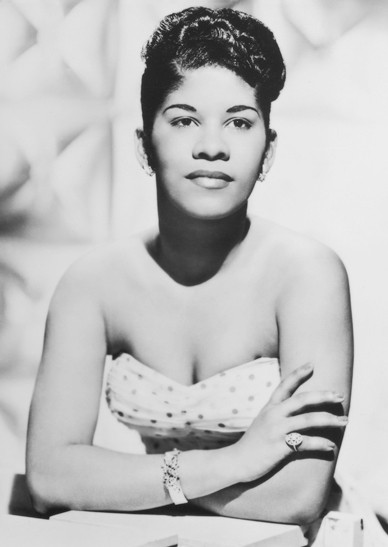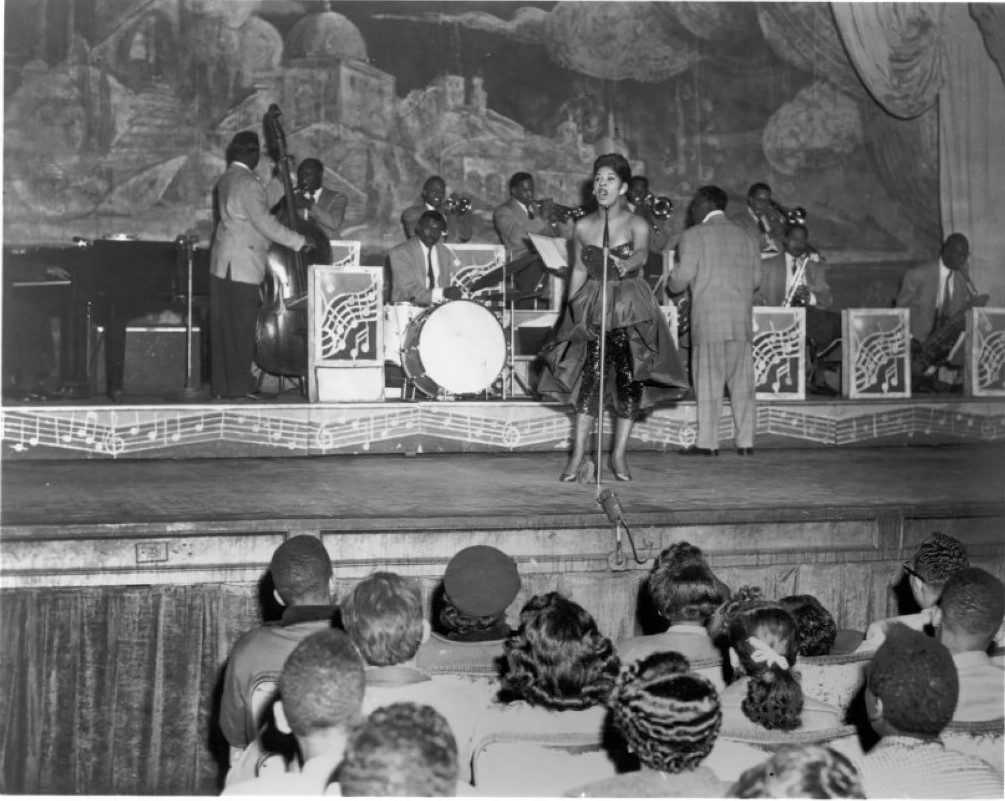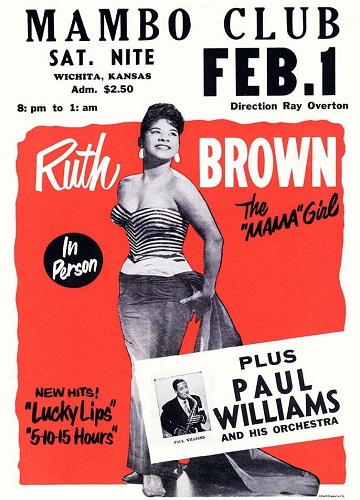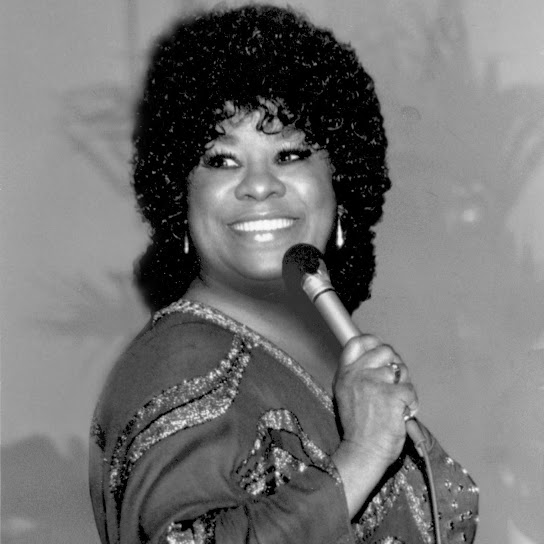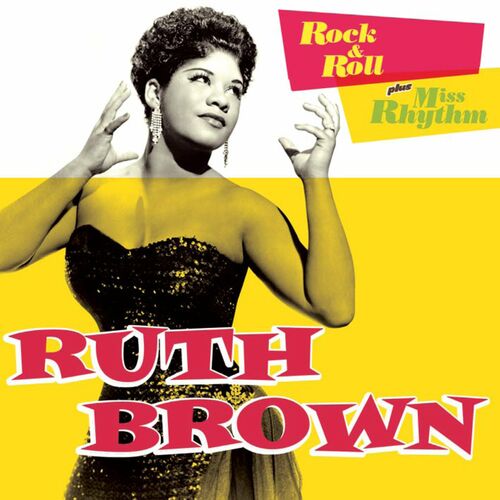As vintage fashion enthusiasts, it’s always a joy to learn about the designers who made your favourite pieces a reality (and to see more of those designs). For today’s post, we will dive into the world of one such designer who has left an indelible mark on the fashion industry: Fred Perlberg.
Fred Perlberg was well known for his beautiful party dresses and I’m excited to showcase the vintage ads & real life dress examples of his stunning designs.
Let’s begin!
Source: Reddit
Further Reading: This post is a series I have done on Vintage Fashion Designers / Brands that I have wanted to showcase not only for my readers but also for myself! Take a read after your done.
Disclosure: Some of the links on my blog from Etsy , eBay are Affiliate Links, meaning, at no additional cost to you, I will earn a commission if you click through and make a purchase.
Fred Perlberg-Dance Originals Designs
About:
Fred Perlberg (1901-1991) began working in the New York fashion industry when he was sixteen. Three years later, at the age of nineteen, he started his own company (around 1920). Fred Perlberg Originals were mid-priced party and dance dresses and were marketed across the United States and Canada. Fred Perlberg retired in 1968, but the company continued with Roger Milot as the designer (Source-Vintage Fashion Guild).
Vintage Inn Blog Note: I was unable to find any of his designs before the 1950s (a little bit in the 1940s) anywhere on the web. If any of my readers can shed light on this designer for the missing time periods that would be fantastic! Comment below.
Vintage Fashion Advertising
November 1940 advertisement: “Mountie Red”. Young Hollywood Fashions sponsored by Fred Perlberg, Inc.
1940s evening gowns inspired by the dramatic colors in Cecil B. DeMille, “North West Mounted Police” with Gary Cooper & Paulette Goddard.
“Holiday red…deep, glistening black-more festive this season because of Chromspun”.
In this 1950s ad, the Fred Perlberg designs highlight the Chromspun taffeta in the two gowns. A petal-skirted, matching sequin trim dress & a floor-length, with dramatic back black evening gown.
Chromspun (acetate fiber with the color locked in) is a trademarked product of the Eastman Chemical Company.
Source: Pinterest
“Here comes the Bride”….This is an original 1956 color print ad for a princess-line wedding dress designed by Miss Lillian of Miriam Modes. Also featured is a long-bodiced bridesmaid dress of Chromspun taffeta with floating back panels, designed by Josephine of Fred Perlberg.
Further Reading – Vintage Photos: The 1950’s Bride
Source: Period Paper
1950s vintage fashion ad featuring stunning full skirt gowns.
Source: Etsy-VintageVortex
1950s fashion ad featuring fashion illustrations of Fred Perlberg dresses for weddings, garden and even Halloween parties.
Source: Etsy-VintageVortex
“Dateline: Holiday Time U.S.A.” featuring pretty nylon tulle evening gowns in full length and waltz length.
Source: Facebook
1stDibs has the actual dress in the ad above for sale on their website at the time of this blog post. I will share it below so that you can see the stunning details the advertisement just cannot show.
Description: 1950s Fred Perlberg white and Robin’s egg blue rhinestone encrusted strapless gown. Boned bodice. Hundreds of rhinestones really make this dress sparkle. Features layers of white tulle with blue silk satin around the waist (Source).
Real Life Examples of Fred Perlberg Dresses
(avail at time of posting)
Vintage Shopping: I have created a ‘Fred Perlberg Dresses’ Etsy Collection that is updated monthly. Happy Shopping!
(NOTE: If you click on any of the items featured below and they are not available, don’t fret! Hit the search button and see what else is on the websites).
The first Fred Perlberg 1950s dress reminds me of the dresses featured in the last advertisement above. A 1950s Prom Dress / Evening Gown in Taffeta (this one is dusty pink & sky blue (which can be seen in certain light) and tiered netting with a bodice that is boned and gathered. STUNNING!
Further Reading: Prom in the 1940s and 1950s
Source: Etsy-SadieVain
1950s party dress with matching shawl. The fabric is textured and embossed. It is a strapless style with a heavily boned bodice and a nipped waist. The waist is pleated and the shelf bodice is sheer ivory fabric with a lace trim.
Fashion Note: I’m really starting to notice that Fred really liked dramatic bodices. Pleating, gathers, petal style designs. This will make it easy for all of you when you are out in the world to instantly recognize his designs.
Source: eBay
1940s lime green Fred Perlberg dress with beautiful buttons down the front and a sheer ribbon bust.
The ebay listing says it’s a 1950s dress but it reminds me of the dress in the 1940s ad featured further up in this post. Happy to be corrected if I am wrong.
Source: eBay
“Holiday Red” like in another vintage ad featured above. Stunning 1950s Evening Gown with a full skirt and lovely pleated details. Beautiful.
Source: Etsy- WoldsVintage
1950s dress with a fitted bustier boned bodice and a super full circle skirt with fantastic orange swirls on the fabric. A wonderful summer dress!
I am IN LOVE with this dress, but sadly I would not fit in it. But someone should buy it and then show it off to the world!
Source: Etsy-VINTAGEVAVAVOOMZ
1940s dark mauve moire taffeta dress. The dress is unique, featuring side bustles with faux flower bouquet (closeup photo below) and rhinestone embellishments. The dress also has matching, open arm band gloves.
Source: eBay
1950s or 1960s emerald green satin fabric with a fitted bodice and full skirt, Fred Perlberg dress. Bodice is completely boned for support and ends in petal-like points of fabric at bust.
Source: Etsy-NostalgiaVintage2
1940s Fred Perlberg silk taffeta evening dress. Once again the cap sleeves and bust area is what stands out in the design of this dress.
Source: Etsy-OffBroadwayVintage
Looking for a “Little Black Dress”? This 1960s Fred Perlberg dress with decorative buttons would be perfect.
Source: eBay
1950s elegant ivory silk chiffon halter gown with large flowers on the fabric. What a statement dress!
Source: Etsy-GlennasVintageShop
Question Time: Have you heard of this fashion Designer? Do you own a Fred Perlberg piece? What dress did you love above? Share any thoughts about this post in the comments section below.
Further Reading:
- Vintage Fashion Designers (Archived blog posts)
- Vintage Fashion 1920s-1960s (Archived posts)
Thanks for dropping by!
Liz

